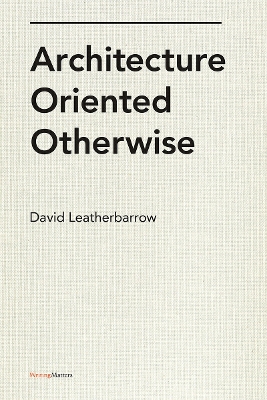The book argues for a shift of orientation in architectural thought, from what the building is to what it does; it also shows that the workings or the reality of the individual work (the room, building, garden, or landscape) cannot be understood apart its wider milieu, the environment in which it finds orientation. We tend to think of buildings as rather static or inert objects; buildings win praise for their stability. What’s more, we also tend to assume each building is a discrete work that can be fully explained by the intentions of its designer and the techniques of its builders. These accounts aren’t wrong, just partial. An important argument of this book is that conception and construction only explain the work’s pre-history, not its manner of existing in the world, its ways of variously resisting and allowing the impress or effect of the forces that animate the wider location.
Leatherbarrow describes what happens to an architectural work once it is exposed to the world, how it behaves among others, “on the street.” This is important because that exposure or behavior strongly affects what we know of and like about buildings.
- ISBN13 9781616893026
- Publish Date 6 January 2015 (first published 1 March 2009)
- Publish Status Active
- Publish Country US
- Imprint Princeton Architectural Press
- Format Paperback
- Pages 304
- Language English
- URL http://abramsandchronicle.co.uk/books/architecture-and-interiors/9781616893026-architecture-oriented-otherwise
